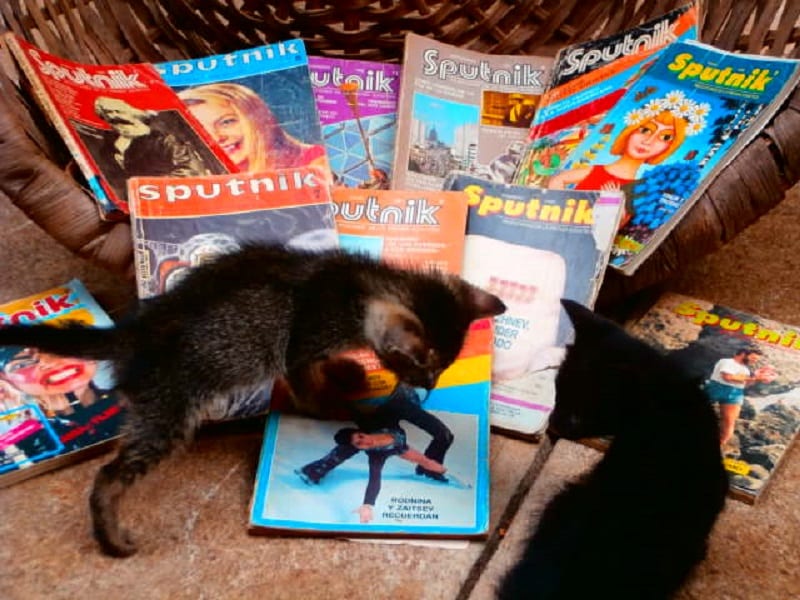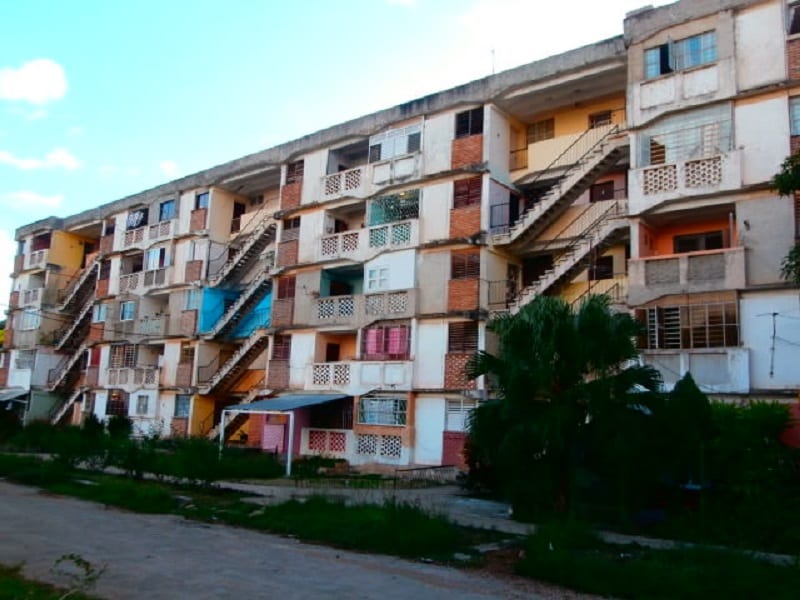The Russians in Cuba
Photo feature by Ariel Glaria Enriquez

HAVANA TIMES — The 1962 Missile Crisis, which put the world on the brink of a nuclear war, was the prelude to the presence of the Russians in my country for several decades.
However, the USSR’s strategic and political interest in not losing this unexpected ally and their absolute influence on the Caribbean island didn’t become immediate until after the crisis. Their opportunity would come when Cuba officially supported the Soviet invasion of Czechoslovakia in 1968.
Nevertheless, it had been some time since Soviet oil had been flowing into Cuba, Russian canned meats were famous on the island, as were the steel-tipped military boots, automatic Kalashnikov rifles and the complete set of Lenin’s works, which soon became a decorative item in Cuban living rooms. An obvious reference to the leather bound book spines found in bourgeois libraries.

The 1971 announcement of distributing Soviet electrical appliances en masse at workplaces as well as the great Soviet style housing projects in Alamar which soon became widespread across the country, turning what had been expected a decade before into reality.
In order to assimilate that strange presence which infiltrated even our aromas and filled our public spaces with long-lasting heavy items, while they modernized our nation, we Cubans gave them the name “Bolos”.

Since then, our culture became bolietisado, socialist realism became an aesthetic idea of intellectual creation. School uniforms were designed in Bolo fashion, education and teaching methods were copied from them, Russian language was taught in schools and names such as Seriocha, Aliuska, Victoriano Ilich etc, were registered on birth certificates, contrasting with Perez, Valdez or Gonzales as surnames.
Meanwhile, Soviet war films, spy series and detective novels refreshed the collective imagination of informers: Mistrust and ideological spying were imposed. Soviet models were converted into the paradigm for teaching “the new man”; skilled in making snowmen and raising bears in Siberia, far from our mosquitos and palm trees.
On the other hand, work disputes to get a hold of Bolos’ electrical devices were justified by five-year plans being met and voluntary work. Other norms were a measure of their political commitment and ironclad faith in the success of the Soviet space missions along with a picture or two of Lenin -which also served to hide away saints- in spite of the fact that we never found out what they were looking for exactly so far from Earth.

We Cubans followed the USSR technological successes in Sputnik magazine, in old people’s superficial debates and in the quality of the radios that the “new man” used in order to catch FM music stations.
While the Cuban people’s subjectivity struggled silently against the ideological coherence imposed on us, which had nothing to do with our way of feeling, and which taught us more about the Taiga and the Caucasus than about the Bellamar Caves or Machu Picchu, the Soviet embassy in Cuba was designed. It is an enormous building with a rocky exterior which was built in the ‘80s, opposite the coastal strip in Miramar to the west of Havana Bay, and which reproduced the intimidating KGB symbol on an architectural scale, precisely at the time when, ironically, the Cold War began to feel the effects of global warming. KONIEK, oops I meant to write THE END.
—–
Notes:
-HT thanks the generosity of everybody who showed us what they had kept from this time, making this photo feature possible.
-The Russian Orthodox Church has been built recently. Today, it has a significant number of followers in Cuba.
-The KGB symbol (Soviet political police) was taken from social media. The rest of these photos were taken recently in Havana, by the author of this post.
Click on the thumbnails below to view all the photos in this gallery. On your PC or laptop, you can use the directional arrows on the keyboard to move within the gallery. On cell phones use the keys on the screen.






























There is a big Chinatown in Cuba too, and there is a Soviet community as well. Many and the majority of vehicles there are Former Soviet Cuban Cars, and China, many Cuban Jews left Cuba, and many Russians were left behind in Cuba, the Cuban government has trained the best spies, the DI/G2 the intelligence system in Cuba is one of the best in the world.
Nice collection! But #24 motocycle “MZ=Motoradwerke Zschopau””is from Germany (GDR) and #17+18 are Polski FIAT. Build under license from italian FIAT in Poland. 😉
M1921 “Bolo” Mauser.
The distinctive pistol became associated with the Bolsheviks and was thus nicknamed the “Bolo”.
Two birds w/ one stone ?
1-Bolo, a derogatory expression for Bolshevik
2-Bolo, a slang Central American term for a drunk
Where does the term “Bolo” orignate ?
You knowyou missed the second most importnt thing russians like to do…drink ! Ive seen them dri k a large water glass of…what ever …rum ..vodka…for breakfast..men and women together in tne hotel lobby .As far as the first thing, Ive seen quite a few blue eyed Cubans walking the streets ???
No pictures there ??